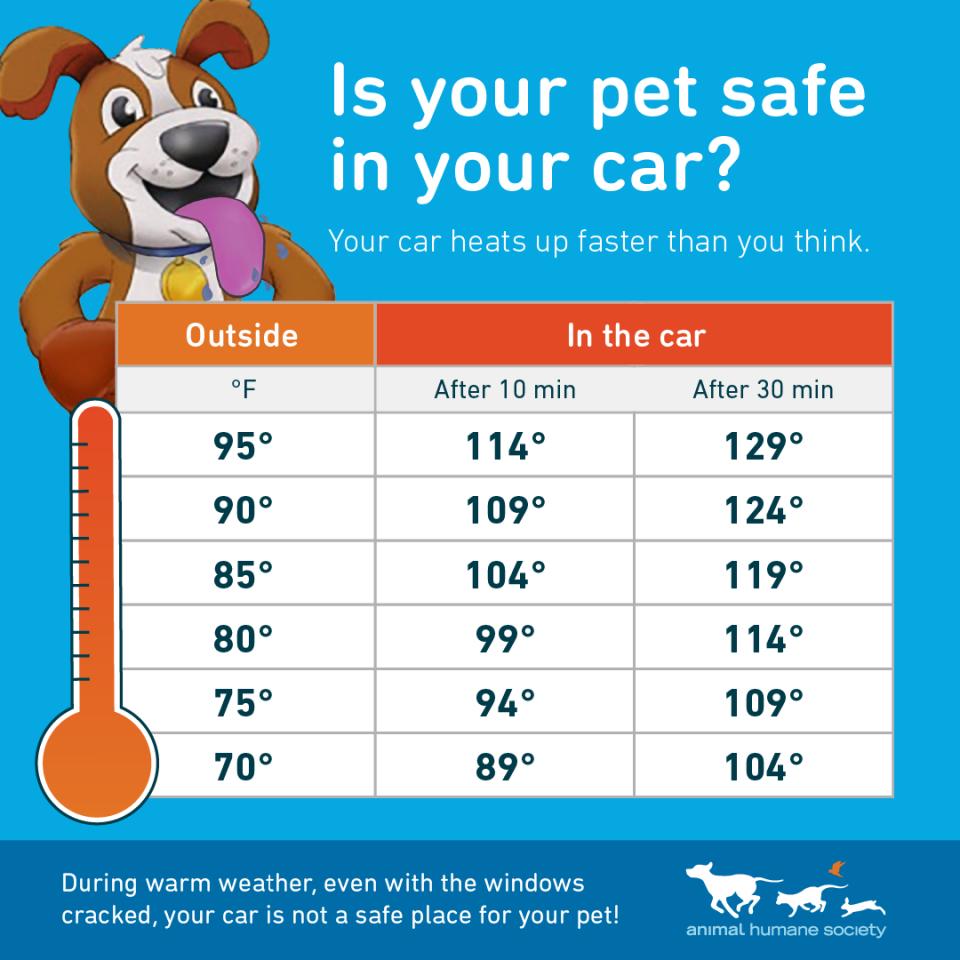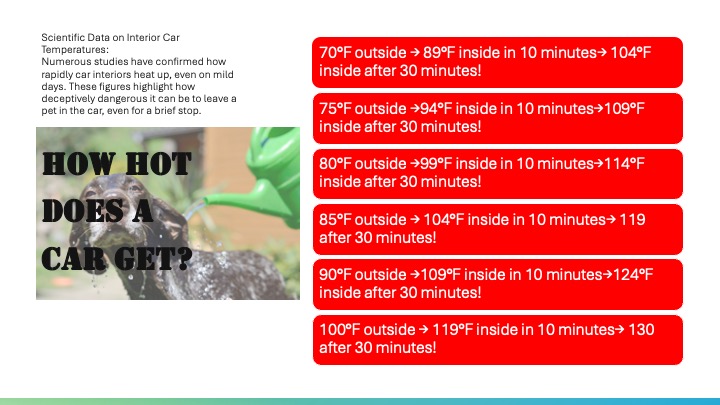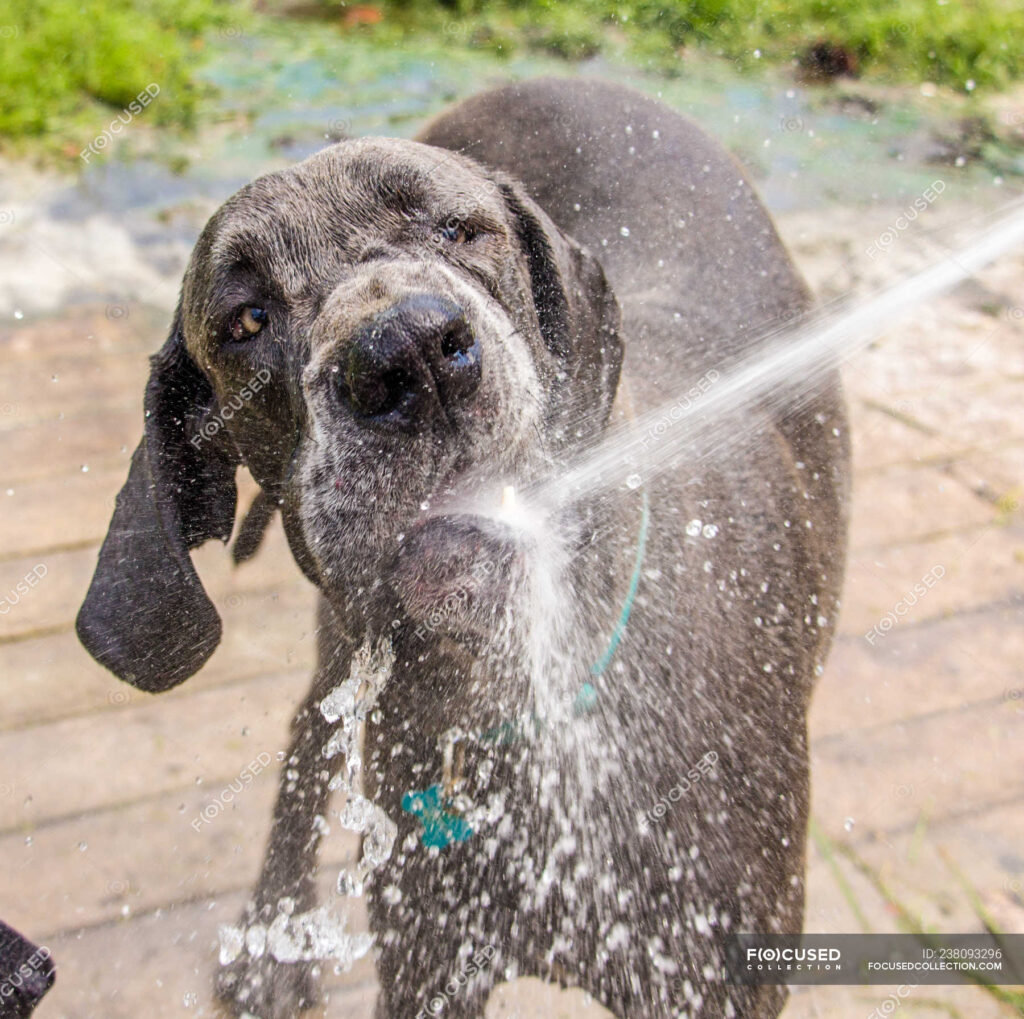

The Hidden Danger of Car Heat for Giant Breeds
Introduction: The Hidden Danger of Car Heat for Giant Breeds
It takes less than 10 minutes for a parked car to become a life-threatening trap for your dog—even with the windows cracked. On a mild 70°F (21°C) day, the temperature inside a vehicle can soar to over 100°F (38°C) within minutes. In hotter weather, that dangerous heat builds even faster, leading to irreversible damage to your dog’s organs, brain, and circulatory system in as little as 6 minutes.
For giant breeds, the risk is even greater. Their massive size means they retain heat longer, have more surface area exposed to rising temperatures, and many are predisposed to breathing difficulties, heart conditions, or heat sensitivity. That means they succumb to heatstroke faster than smaller dogs.
A cracked window—whether it’s an inch or six inches—does almost nothing to reduce these deadly temperatures. The widely believed myth of “it’s just for a minute” or “they’ll be fine with the windows down” is a dangerous gamble with your dog’s life. Even short errands can have devastating consequences.
In this article, we’ll break down why cars heat up so rapidly, how it specifically impacts giant breeds, and what you can do to protect your dog year-round.
How Hot Does a Car Get?
Scientific Data on Interior Car Temperatures:
Numerous studies have confirmed how rapidly car interiors heat up, even on mild days. These figures highlight how deceptively dangerous it can be to leave a pet in the car, even for a brief stop.

70°F outside → 89°F inside in 10 minutes→ 104°F inside after 30 minutes!
75°F outside →94°F inside in 10 minutes→109°F inside after 30 minutes!
80°F outside →99°F inside in 10 minutes→114°F inside after 30 minutes!
85°F outside → 104°F inside in 10 minutes→ 119 after 30 minutes!
90°F outside →109°F inside in 10 minutes→124°F inside after 30 minutes!
100°F outside → 119°F inside in 10 minutes→ 130 after 30 minutes!
The “Greenhouse Effect” Explained Simply:
The reason cars heat up so fast is due to the “Greenhouse Effect.” Sunlight passes through the car’s windows, warming the seats, dashboard, and interior surfaces. These surfaces then release heat in the form of infrared radiation, which becomes trapped inside the vehicle. Unlike the original sunlight, this infrared heat cannot easily escape through the glass, causing temperatures to rise rapidly—essentially turning your car into an oven.
Note: Heat Rises Quickly Even in Shaded Areas:
Many pet owners believe parking in the shade or cracking the windows offers sufficient protection, but the science proves otherwise. Even in shaded areas or with windows slightly open, cars still trap heat. Shade may slow the temperature rise slightly, but interior conditions can still reach dangerous levels within minutes. Simply put, there is no safe way to leave your dog in a parked car during warm weather.
Why Giant Breeds Are at Higher Risk
Many people assume that giant breeds, with their thick coats and rugged builds, are naturally suited to endure extreme climates—including the sweltering, humid heat common in the Southern Delta region. Unfortunately, that couldn’t be further from the truth. Most giant breeds were developed for cooler environments—mountain ranges, northern forests, and temperate plains—not for subtropical heat waves. Their large bodies and insulating coats trap heat, making it much harder for them to cool down, especially in confined spaces like a parked car.
Larger Body Mass = Slower Cooling
Giant breed dogs carry significant muscle and bone mass, which means their bodies generate and retain more heat. Unlike smaller dogs, they have a harder time dissipating that heat efficiently, particularly when airflow is limited or temperatures rise rapidly.
Health Problems Amplified by Heat
Beyond size, giant breeds often come with health predispositions that make them especially vulnerable to overheating:
- Bloat (Gastric Dilatation-Volvulus) risk increases dramatically when a dog is overheated, stressed, or dehydrated. Bloat is a life-threatening emergency that can strike fast and is common in many large and giant breeds.
- Heart Conditions, especially Dilated Cardiomyopathy (DCM), can worsen with heat exposure. A heart already under strain can fail faster when combined with dehydration and heat stress.
- Breathing Challenges plague certain breeds, particularly those with flat faces (brachycephalic breeds) like some Mastiffs, Saint Bernards, and others. Heavy coats and shorter nasal passages restrict their ability to cool through panting—one of the primary ways dogs regulate body temperature.
The combination of these factors means giant breeds not only heat up faster than many owners realize, but they also struggle far more to cool back down—putting them at deadly risk if left in hot vehicles, even briefly.
Emergency Treatment On Site
So, you ran into the store. Maybe just for milk. Maybe just to grab a prescription. You cracked the windows. You thought it’d be fine. But when you come back to the car, your giant breed isn’t “fine”—they’re in distress. Their tongue’s hanging, they’re drooling excessively, they look wobbly—or worse, they’re collapsed.
Here’s what you don’t have time for: panic, excuses, or waiting.
Here’s what you do immediately:
Get the Dog Out—Fast
If they’re conscious and able to move, get them out of the vehicle immediately and into shade. If they’ve collapsed or can’t stand, drag them out.
Pride doesn’t matter; minutes do!
If the doors are locked and you can’t get inside, break the window. Legally, many states allow this to save an animal in distress, and frankly, the fine for a window is cheaper than the loss of your dog.
Cool the Body—But Do It Right
- Pour cool—not ice-cold—water over their body. Start with the paws, belly, and armpits; avoid dumping it over their head if they’re struggling to breathe.
- Use wet towels placed on their paws, neck, and underarms if water isn’t available.
- Do NOT cover the entire body in wet towels; that can trap heat.
- If you can, set up airflow with fans or AC aimed directly at them.

Offer Small Sips of Water
If they’re alert and can swallow, let them drink cool (not ice-cold) water. Don’t force water into an unresponsive or semi-conscious dog—it can cause choking.
Get to a Vet—Immediately
Cooling on-site is only step one. Heatstroke in giant breeds is deadly, and internal damage continues even after they seem “better.” Drive straight to the nearest vet or emergency animal clinic while cooling them as best you can during transport.

Final Reality Check:
If your giant breed is showing signs of heat distress, you’re already racing the clock. Their sheer size, predisposition to heart issues, and poor heat tolerance mean heatstroke can escalate faster than most people expect. Your best emergency treatment? Don’t put them in that situation to begin with.
Signs of Heat Distress You Can’t Afford to Miss
The moment your giant breed starts showing these signs, they are already in danger. Don’t wait. Don’t “watch and see.” Act immediately.
Early Warning Signs:
- Excessive panting, heavy drooling
- Bright red gums or tongue
- Restlessness or pacing
- Rapid heart rate
- Weakness or lethargy
Advanced Signs (Critical Stage):
- Vomiting or diarrhea (sometimes with blood)
- Uncoordinated movement or collapse
- Glazed eyes, confusion, or disorientation
- Seizures
- Loss of consciousness
Reality Check: Giant breeds hide pain. By the time they look in distress, they’re already in trouble. Never ignore these signs, no matter how “minor” they seem.
Mobile Emergency Response Kit
If you own a giant breed, this kit belongs in your vehicle year-round—especially in warm months. Heat emergencies can happen at the park, roadside, or right outside the store.
What You Need:
✅ Cool water (2–4 gallons minimum; dogs this size need volume)
✅ Collapsible water bowl
✅ Spray bottle for misting or targeted cooling
✅ Clean towels or lightweight blankets (for shade or cooling limbs)
✅ Battery-operated fan (clip-on style)
✅ Spare leash and harness (for stability if they collapse)
✅ Emergency contact sheet:
- Your vet’s number saved in your phone AND written on paper
- Nearest 24-hour emergency animal hospital
✅ Car window shades (helps reduce interior temps when parked)
✅ Basic first aid supplies (bandages, antiseptic wipes—heatstroke can cause injuries from collapsing or seizures)
Final Reminder:
You can replace towels. You can refill water jugs. But you can’t undo heatstroke if you wait too long. Preparation saves lives—and when minutes matter, having your vet’s number ready can be the difference between survival and heartbreak.
Heatstroke & Signs of Distress
When it comes to dogs locked in hot cars, heatstroke is brutal—and fast.
Even on a mild day, temperatures inside your vehicle can skyrocket within minutes. Giant breeds, with their size, thick coats, and breathing challenges, are even more vulnerable.
Know these signs:
- Excessive, frantic panting (not just “I’m warm” panting)
- Thick drool, often ropey or foamy
- Sluggishness, weakness, or sudden collapse
- Vomiting or diarrhea
- Glassy eyes, confusion, or unsteady movement
- In severe stages: Seizures, loss of consciousness, or unresponsive behavior
Why Early Action Saves Lives:
By the time these symptoms appear, your dog’s core temperature may already be dangerously high. Giant breeds overheat fast—and cool down slow. Waiting or “seeing how they do” is gambling with their life.
Safe Alternatives to Leaving Your Dog in the Car
We get it—you love your dog and they love riding along. But some errands aren’t worth the risk.
Better Options:
✅ Leave them home in the A/C—the safest, simplest choice.
✅ Use drive-thru or curbside pickup whenever possible.
✅ Travel with another person—one stays with the dog, windows down, engine running if needed.
✅ Portable cooling devices—clip-on fans, reflective sunshades, battery-powered coolers. Helpful, but they’re not magic shields. You still need constant supervision.
Legal Risks & Bystander Laws
Leaving a dog in a hot car isn’t just dangerous—it can get you fined or arrested. Most U.S. states now have laws protecting animals trapped in vehicles under unsafe conditions.
Can someone break your window to save your dog?
That depends on where you live. In many states, Good Samaritan laws allow bystanders to act—but only under strict rules:
- They must check if doors are unlocked first
- Call law enforcement before breaking in
- Remain on scene until help arrives
Where to Look Up State-Specific Laws:
For reliable, updated info:


Check your area—laws vary widely, and ignorance won’t save you from legal consequences.
The Hard Truth
Minutes Mean Life or Death.
A “quick trip inside” is never worth your dog’s life—especially not for giant breeds, whose very size works against them in extreme temperatures.
🚨 Want to protect your dog?
- Know the signs of heat distress
- Keep that Mobile Emergency Kit ready
- Leave them home when in doubt
Keep learning: Explore more health essentials for giant breeds, including heatstroke prevention, emergency care, and first aid.
Help save lives—share this article. Awareness is everything.

